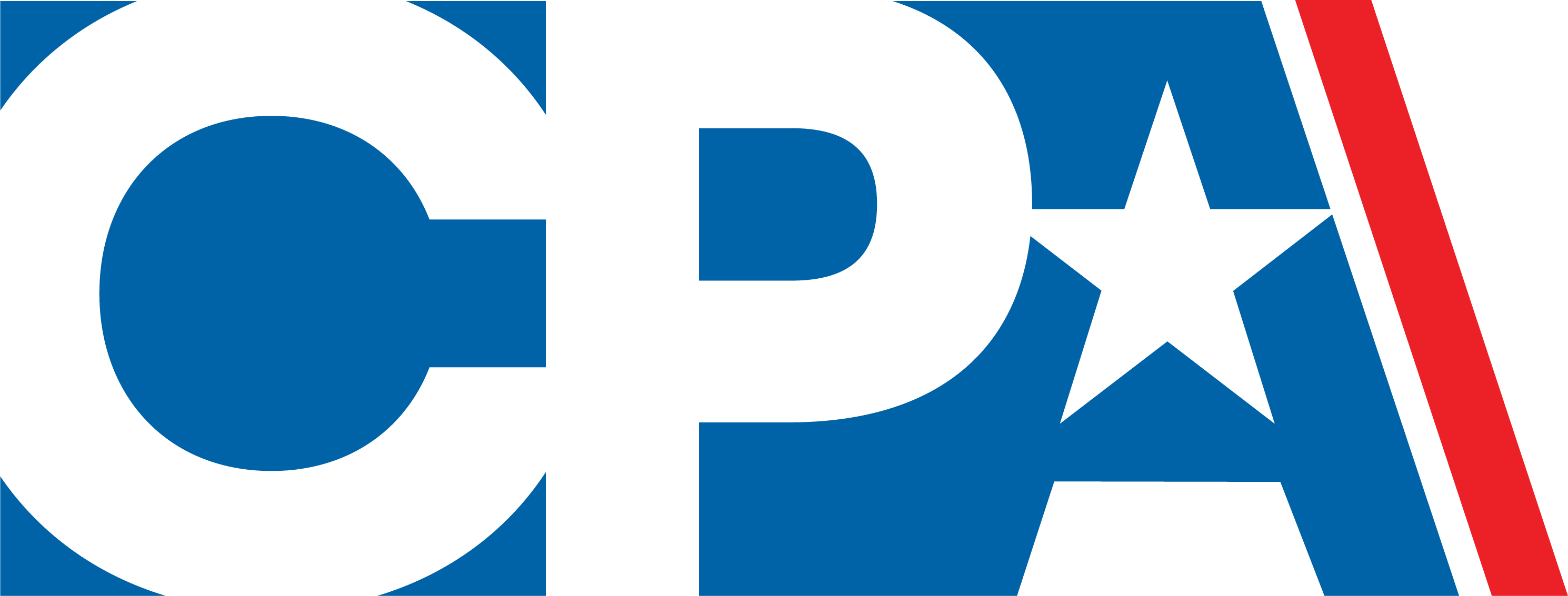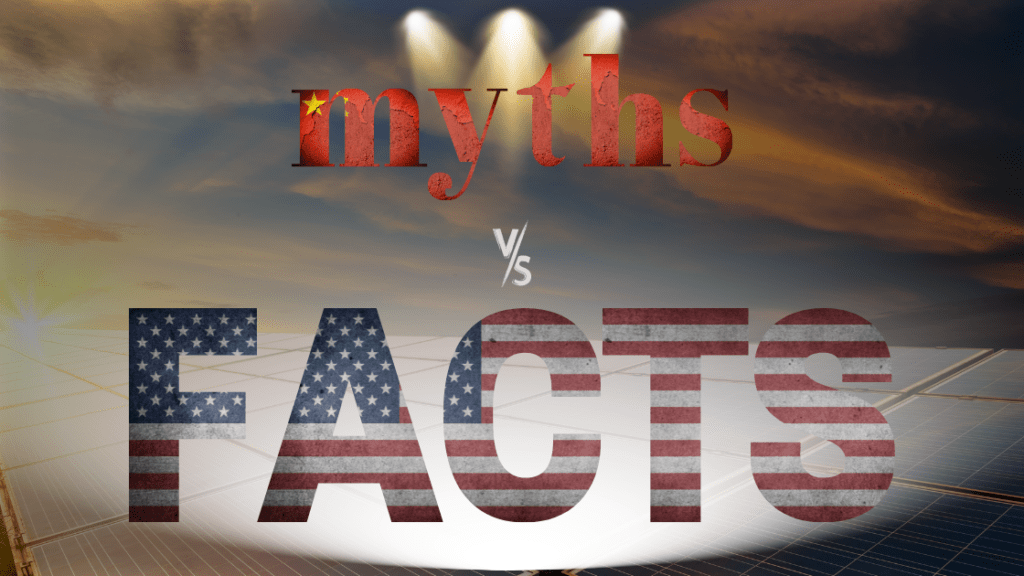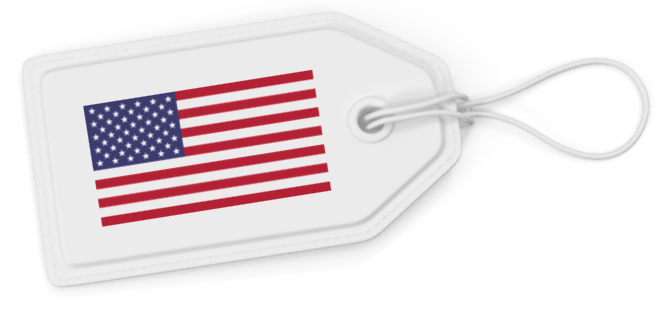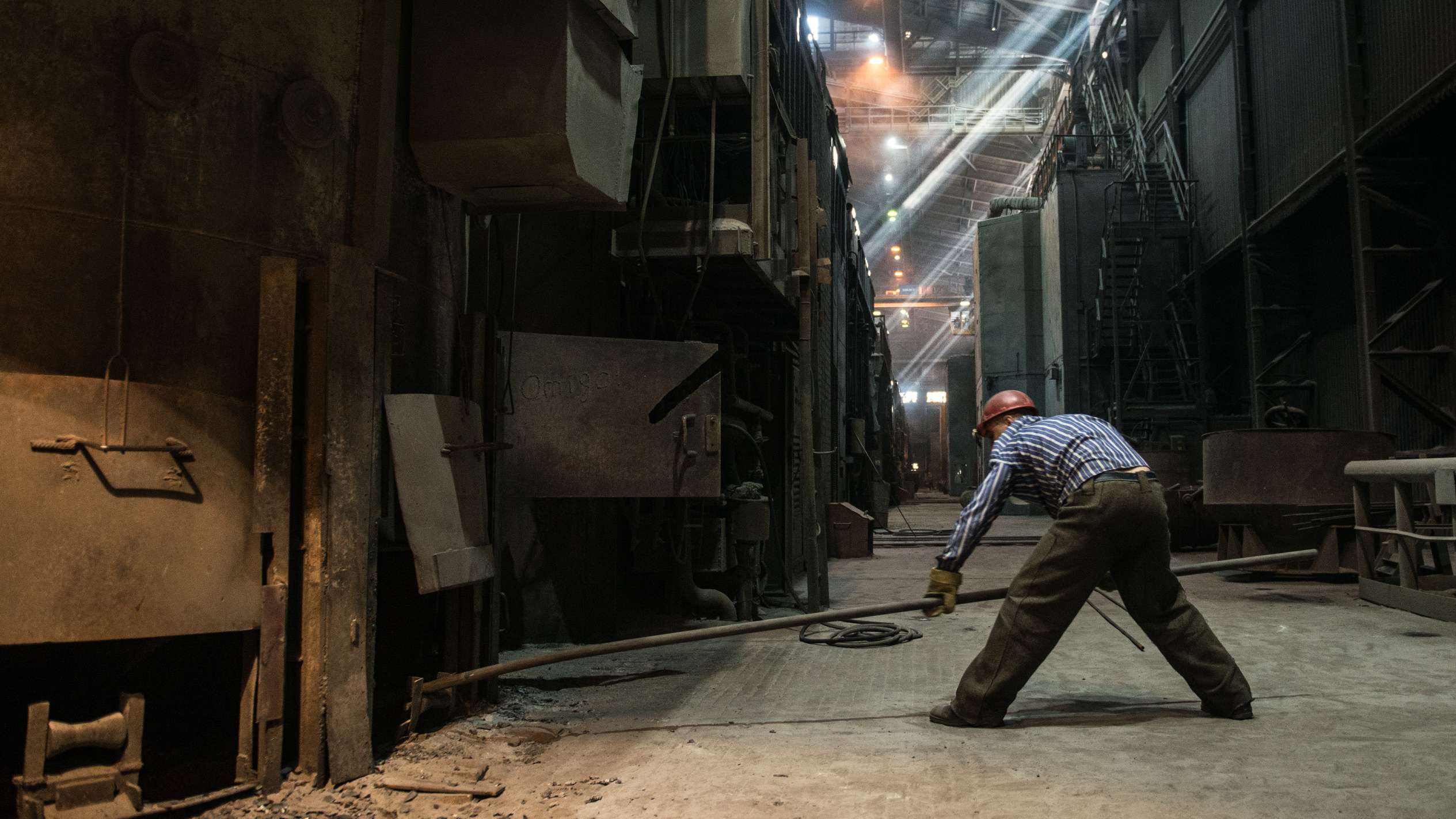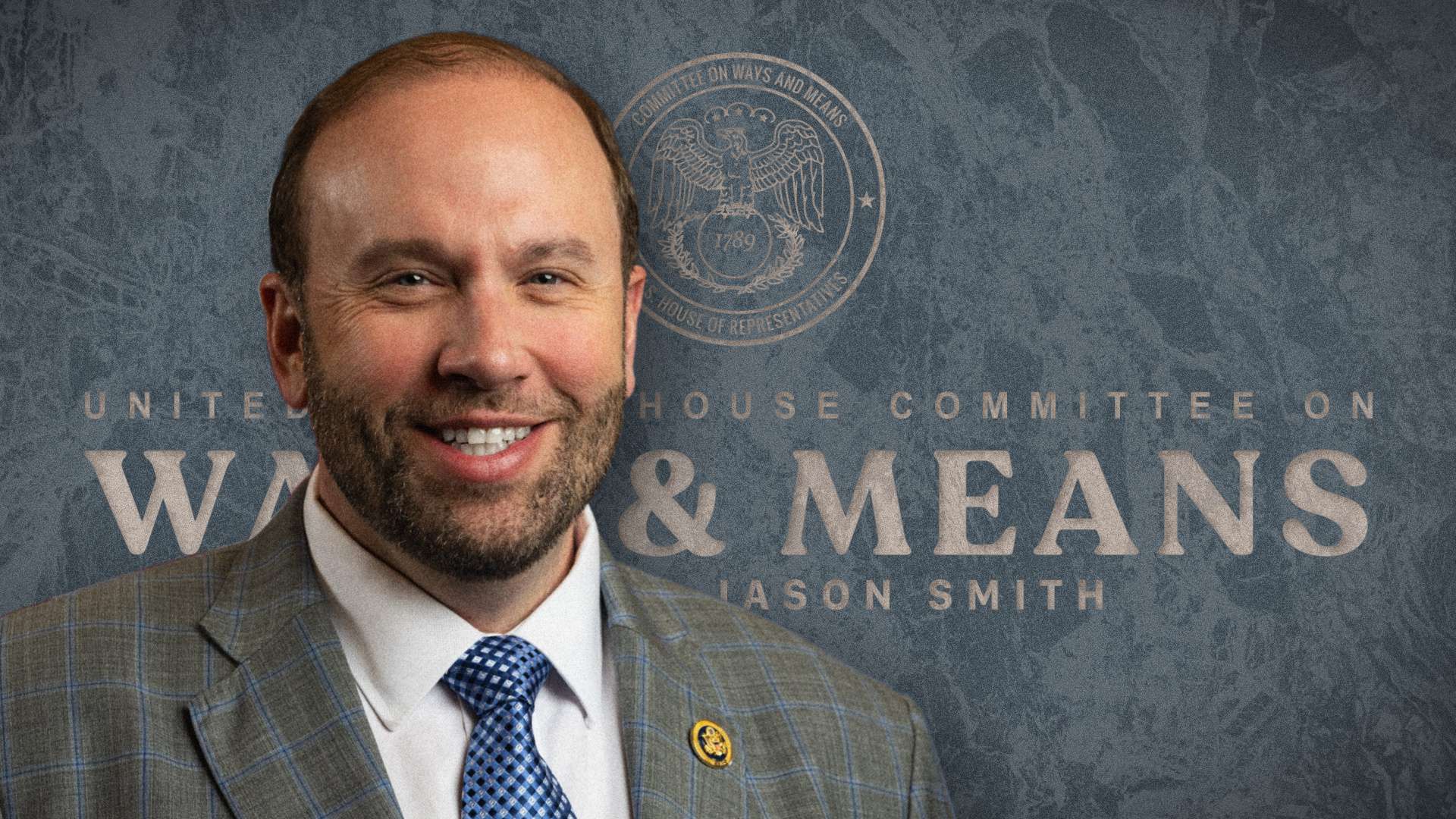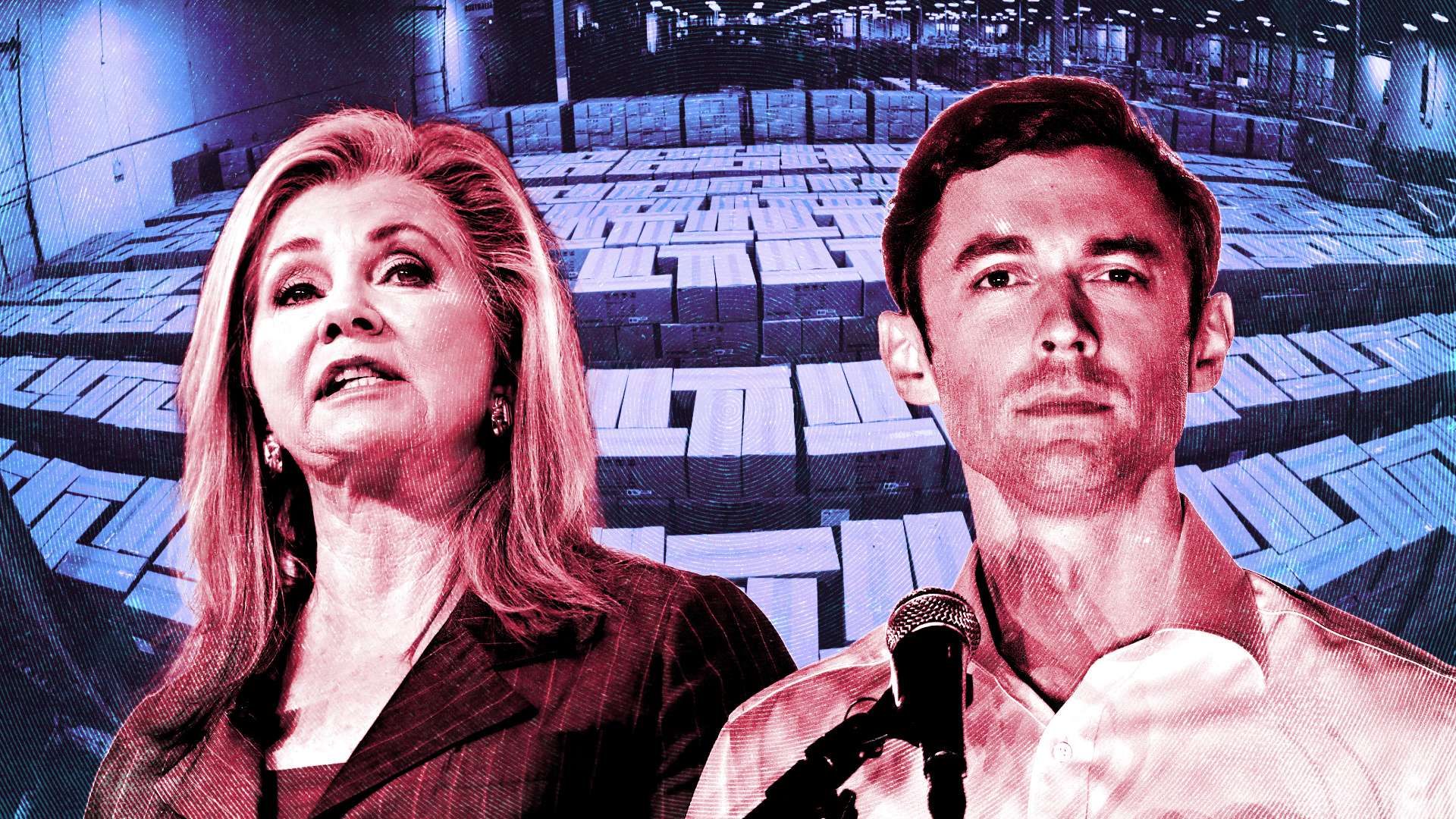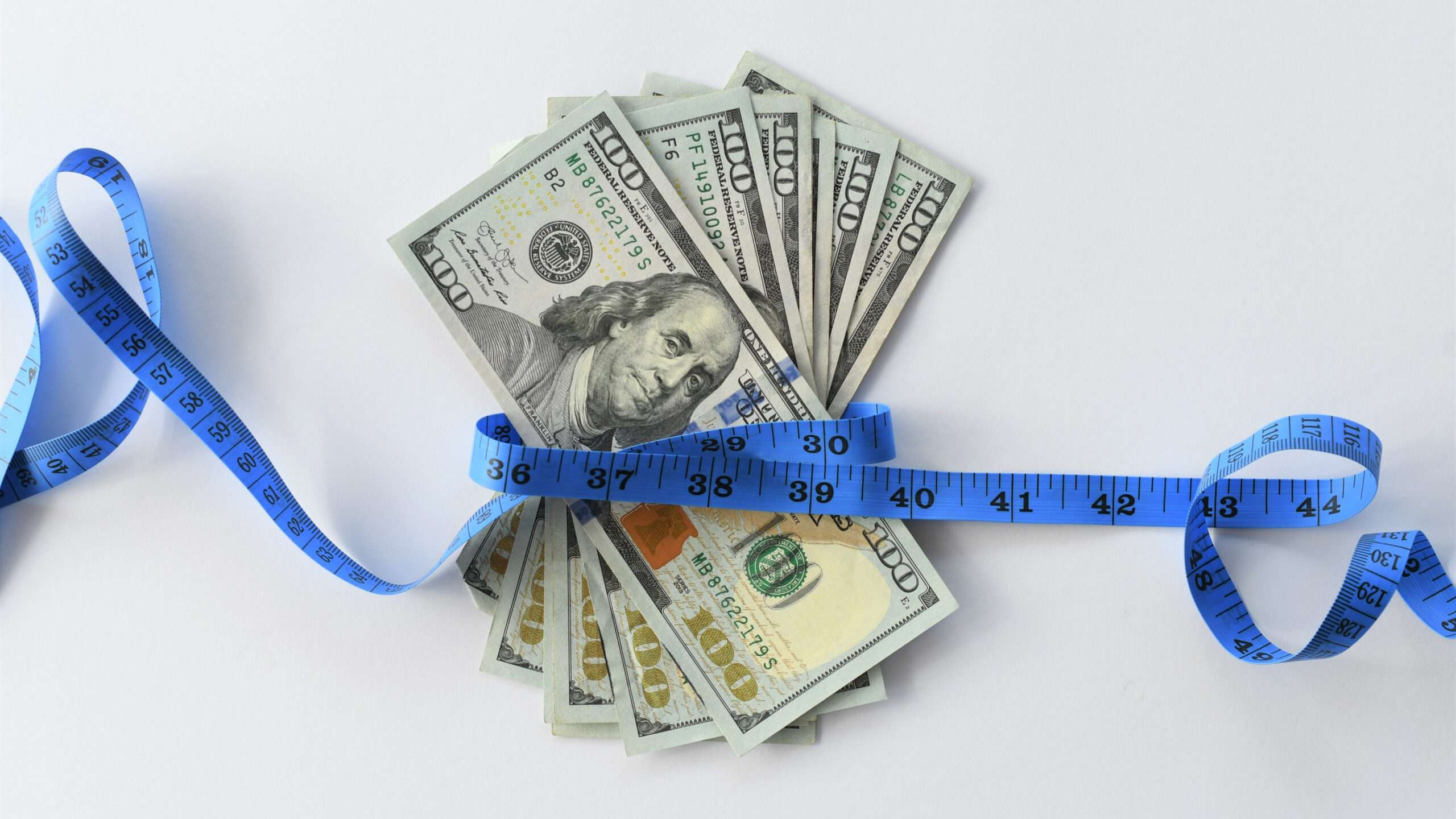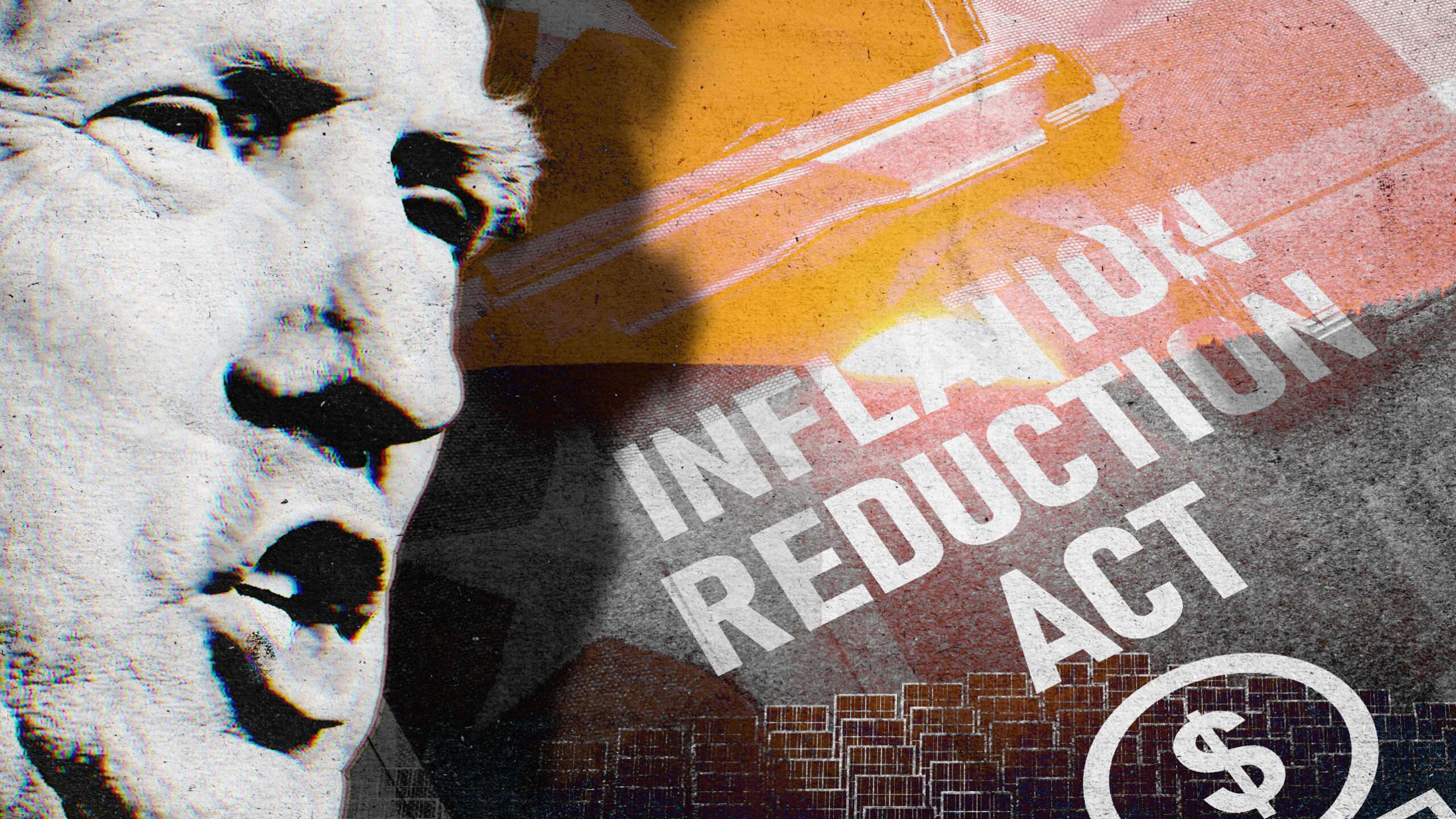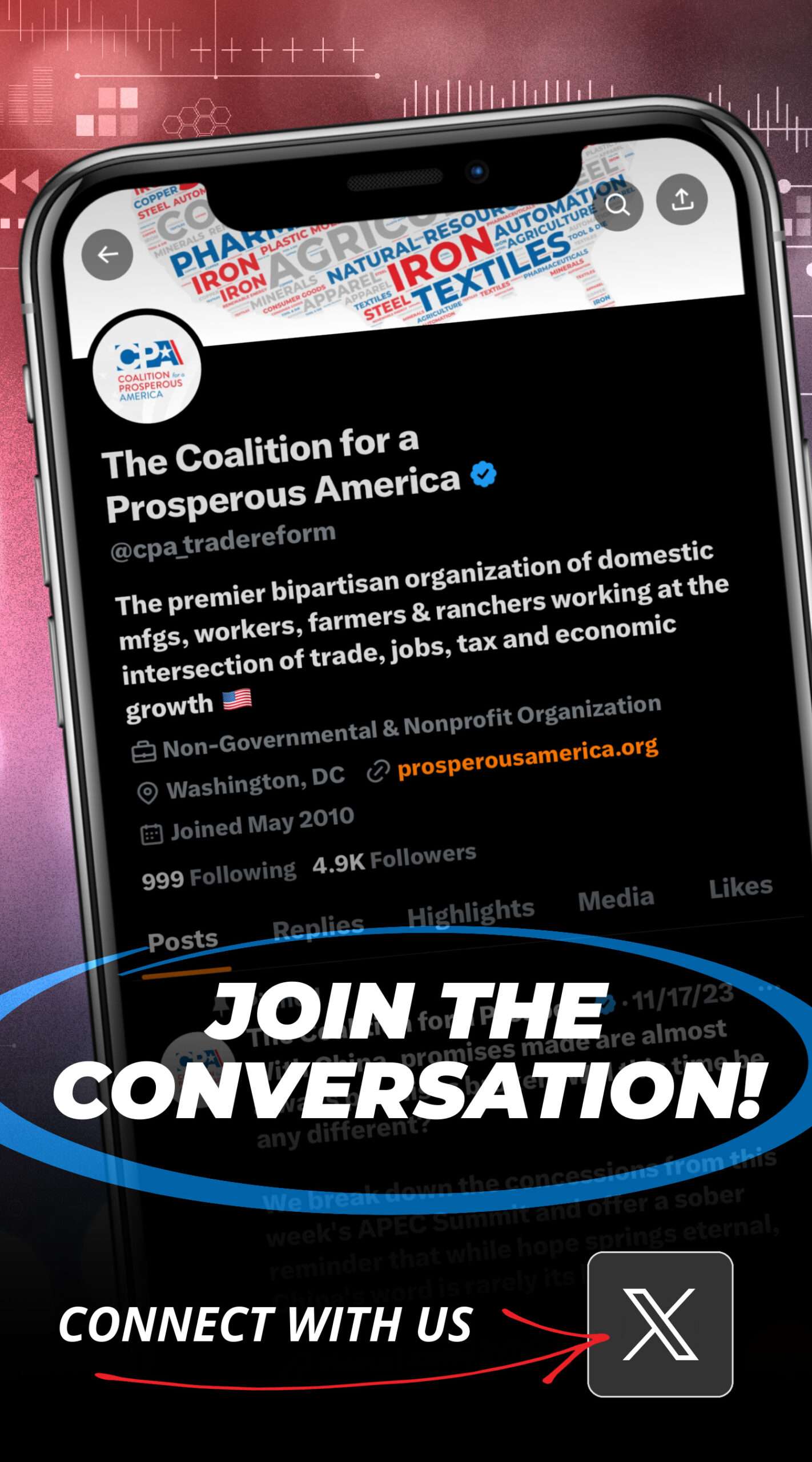Background
In March of 2022, the U.S. Department of Commerce initiated an investigation into Chinese companies operating in Malaysia, Thailand, Vietnam, and Cambodia that are illegally circumventing existing antidumping and countervailing (AD/CVD) duty orders on solar cells and modules from China.
In December of 2022, Commerce issued a preliminary determination that found that Chinese companies operating in Malaysia, Thailand, Vietnam, and Cambodia are illegally circumventing existing AD/CVD duty orders.
In an unprecedented move, the Biden administration issued a Solar Emergency Declaration in June 2022 that effectively neutralizes Commerce’s investigation and allows Chinese solar makers to continue illegally avoiding U.S. tariffs until June 2024, regardless of Commerce’s final determination. This two-year suspension of tariffs is in reality a “get out of jail free card” for the Chinese, not only for 2 years but forever. This is because the Commerce preliminary determination allows China to avoid tariffs completely and forever by merely constructing wafer facilities outside of China, something that will easily be accomplished before the 2 year suspension ends. This absurd result could not have been engineered better by the CCP itself.
Biden’s emergency declaration came after intense lobbying by the Solar Energy Industries Association (SEIA), a trade association that has been exposed as a front for Chinese solar manufacturers and whose members have been implicated in the use of forced labor in Xinjiang. Last year, Commerce announced it was investigating three of SEIA’s Chinese members for illegal trade activity. As The American Prospect reports, “SEIA’s membership includes U.S. subsidiaries of Chinese producers JinkoSolar, JA Solar, Trina Solar, BYD, and LONGi Solar, which are the dominant solar component manufacturers in the world.”
Opponents of Commerce’s anticircumvention investigation, including SEIA, have spread a number of myths about the case to try to undermine a well-established process, create panic and alarm, and improperly influence the enforcement of U.S. trade laws. This fact sheet addresses those untrue claims.
The Solar Emergency Declaration
Myth: The Biden administration’s Solar Emergency Declaration is good policy for the U.S., the environment, and American workers.
Fact: The Solar Emergency Declaration neutralizes Commerce’s investigation that has preliminarily found that the Chinese are illegally circumventing AD/CVD duties. The Solar Emergency Declaration makes a mockery of U.S. trade law and instead allows the Chinese to continue illegal activity that directly harms American manufacturers and workers.
Myth: The Solar Emergency Declaration only lets Chinese solar manufacturers illegally violate U.S. trade law for two years.
Fact: The Solar Emergency Declaration is in reality a “get out of jail free card” for the Chinese forever. This is because the Commerce preliminary determination allows China to avoid tariffs completely and forever by merely constructing wafer facilities outside of China, something that will easily be accomplished before the 2 year suspension ends. This absurd result could not have been engineered better by the CCP itself.
Merits of the Investigation and Need for Enforcement
Myth: It is appropriate to interfere politically in the legal process of this Circumvention case.
Fact: Political interference is not appropriate because the Department of Commerce’s consideration of this Circumvention case is a legal process to enforce trade laws. Any sort of interference in this investigation violates the law, due process and contributes to the unfair landscape that is being created.
Myth: Trade laws do not need to be enforced in solar. Tax or other incentives alone would be enough for American solar manufacturing.
Fact: Tax incentives are important to spur American solar manufacturing growth, but insufficient in the face of multidimensional Chinese abuses. Those abuses include extraordinarily large subsidies that the U.S. government would never match. They also include dumping, circumvention, use of forced labor, dirty coal and theft of intellectual property. The combination of these abuses have allowed Chinese companies to create a virtual monopoly of the solar supply chain. A whole-of-government approach to bolster the domestic supply chain and meet deployment targets is needed.
Tariff Rates and Cost of Solar
Myth: If determined to be circumventing, Circumvention tariffs would make solar too expensive.
Fact: Tariffs have not and will not halt the per kilowatt decline in solar prices. Advances in product and process technology as well as scale economies of new plants have been and will be the driver of price. Solar is now the lowest cost form of producing electricity despite the imposition of tariffs in 2012 and 2018. Ensuring large scale domestic production will insure against future solar price hikes and supply chain shocks by preventing a renewable energy monopoly in the hands of a hostile nation.
Myth: If the Circumvention case is successful and trade laws are enforced, then all solar panels could be subjected to tariff rates as high as 250%.
Fact: Under the Commerce preliminary determination, most Chinese solar manufacturers found to be circumventing would be subject to much lower tariff rates in the range of 20 – 30% because Chinese manufacturers are allowed to benefit from the much lower tariff rates established for their wafer suppliers unless they failed to respond or provided misleading information to Commerce to Commerce.
U.S. Energy Independence, Supply Chain Stability and National Security
Myth: Relying on a Chinese produced solar supply chain running through Southeast Asia does not pose risks to U.S. energy independence, supply chain stability and national security.
Fact: America cannot exchange Middle East oil dependency for Chinese renewable energy dependency. Europe’s over-reliance on Russian oil and gas is the most recent reminder. China is supporting Russia’s Ukraine invasion and continues threatening to invade Taiwan. Over reliance on a geopolitical adversary is the more expensive and insecure option.
Solar Deployment, Climate Goals, and Environmental Justice
Myth: If this circumvention case is successful and the trade laws are enforced, then solar deployment will be slowed.
Fact: Tariffs addressing Chinese trade abuses have been applied since 2012 and, rather than slowing down, solar deployment has grown rapidly in the United States and will continue to do so. Rapid solar deployment requires a stable and secure domestic supply chain, which can only be accomplished if the trade laws are enforced.
Myth: Short-term supply disruptions and uncertainty in the solar supply chain are a legitimate reason to not enforce trade laws for solar.
Fact: The short-term supply disruptions and uncertainty are caused by the U.S.’ unhealthy dependence on a supply chain controlled by Chinese manufacturers. This industry has been subject to increases in logistics costs, skyrocketing polysilicon prices caused by a Chinese monopoly, concerns over Chinese forced labor, or other issues caused by a lack of control over our supply chain. If trade enforcement is abandoned, then the short-term disruptions and uncertainty will become long-term issues. We can solve these issues by supporting American solar manufacturers in rebuilding an alternative supply chain not over-reliant on Chinese companies.
Myth: Climate goals can’t be met unless we continue our over-reliance on solar produced by Chinese companies in Southeast Asia.
Fact: If the trade laws are enforced and American manufacturers don’t have to keep competing with subsidized and dumped solar panels produced by forced labor, then American workers will be able to supply more than 50% of U.S. needs by 2025 and 100% by 2030. In fact, the U.S. will be in a position to export solar products globally and be a leader in promoting climate technology and solutions to nations around the world. There is also substantial capacity produced by manufacturers from allied countries such as India, Singapore, South Korea, Japan, and Europe, as well as non-Chinese manufacturers in Southeast Asia that can be utilized to allow us to meet our goals without an unhealthy over- reliance on Chinese companies.
Myth: Chinese solar products are true green products.
Fact: Chinese solar products have a much higher carbon footprint than the U.S.-produced solar products because they use coal-fired electricity to power their factories. U.S. solar products have a much lower carbon footprint, with factories utilizing lower carbon sources of electricity such as hydropower. In fact, a recent study by Cornell University shows that use of U.S. made solar panels could cut emissions by 30%.
Myth: Chinese trade abuses do not harm minority and other marginalized communities.
Fact: Chinese trade abuses have cost minority and other marginalized communities millions of jobs. Enforcement of the trade laws in solar can result in the creation of hundreds of thousands of high-quality, stable and community-based manufacturing jobs of the future. Solar manufacturing jobs, which are far superior to unstable, seasonal and project-based jobs installing Chinese solar modules, are a powerful tool to bring equity and a bridge to the middle class for minority and other marginalized communities.
One study from Howard University found that the average trade shock to exposed industries resulted in a 32.4 percent reduction in jobs, translating to 405,679 jobs that would have continued to exist had it not been for import penetration from China. Another more recent study from the Economic Policy Institute found that the loss of good-paying, union manufacturing jobs are more acutely felt by many Black, Indigenous, and BIPOC communities.
American Solar Manufacturing and Jobs
Myth: U.S. solar manufacturers are harmed by the Circumvention case and enforcing trade laws.
Fact: This Circumvention case and enforcement of trade laws are absolutely needed to protect American solar manufacturers and their workers from predation by China. Enforcement of trade laws is necessary, as part of a whole of government approach, to address Chinese trade and other abuses and level the playing field for U.S. solar manufacturers and their workers.
Myth: We don’t need solar manufacturing jobs in the U.S.
Fact: Solar manufacturing jobs are exactly the kind of high quality, place-based and stable jobs of the future that Americans need. Jobs merely installing Chinese solar panels, many of which are seasonal, project-based, not place-based or not full time do not provide the same path to the middle class that is provided by solar manufacturing jobs. If the trade laws are enforced it will result in hundreds of thousands of high quality, stable, full time manufacturing jobs of the future.
Slave Labor used by Chinese Solar Manufacturers implicated in this Circumvention Case
Myth: Chinese solar manufacturers implicated in this Circumvention case do not have affiliates implicated in use of forced labor.
Fact: Several Chinese solar manufacturers, including four Chinese members of the largest solar trade association in the United States, SEIA, were named in an academic report that was released by the Coalition to End Forced Labour in the Uyghur Region detailing the widespread use of Uyghur forced labor within the solar industry. The report found that the four largest solar panel suppliers in the world—JinkoSolar, JASolar, TrinaSolar and LONGi – all source from at least one polysilicon manufacturer that is directly alleged to be using Uyghur forced labor.
Retaliation by China and their Allies Against American Solar Manufacturers
Myth: Auxin is alone in supporting this case.
Fact: A coalition of U.S. solar manufacturers agree with Auxin’s position. Due to a track record of Chinese retribution, however, they have legitimate fear of publicly expressing their support. In 2014, President Obama’s Department of Justice issued an indictment of the Chinese military for hacking SolarWorld and stealing valuable intellectual property as retribution for their involvement in solar trade cases. Auxin too has recently faced harassment of its employees and attacks on their factories as a result of their petition.
Myth: The Chinese government, Chinese solar manufacturers and their supporters and enablers don’t engage in harassment, intimidation, retribution, and crimes against American solar manufacturers.
Fact: There is a long history of harassment, intimidation, retribution and crimes by the Chinese government, Chinese solar manufacturers and their supporters and enablers against American solar manufacturers. Attorney General Eric Holder in 2014 indicted agents of the Chinese government for hacking into the systems of SolarWorld, a petitioner in the original Solar 1 AD/CVD trade case and one of the largest American solar manufacturers at the time who has since been driven out of business as a result of Chinese trade and other abuses. There is also a well-documented history of solar IP theft by China.
Now, because of this circumvention case, Auxin’s systems and physical facilities have recently been hacked and broken into. Auxin has also been blacklisted and subjected to trolling reviews and digital media reputational attacks, including a website dedicated to “exposing” Auxin, by those hoping that if Auxin is driven into bankruptcy this circumvention case will be dropped and Chinese companies will be free to continue their trade and other abuses without fear of trade law enforcement. Opponents of this circumvention case, through their coordinated and well-funded PR and GR campaign, are now even resorting to tactics aimed at directly intimidating the Department of Commerce; the Secretary of Commerce has been accused of misconduct for performing her duty to investigate Chinese trade abuses in solar.
Support for American Solar Manufacturing and Enforcing Trade Laws in Solar
Myth: Voters don’t care about Chinese trade abuses in solar nor where their solar panels come from.
Fact: A poll by Morning Consult overwhelmingly shows that voters support American solar manufacturing and believe that Chinese trade, human rights other abuses in solar should be addressed.
- 90% of voters think the U.S. should manufacture renewable energy domestically
- 70% say the U.S. should not be dependent on China and Chinese-controlled factories in Southeast Asia for solar imports
- Forced labor and coal use in China’s solar supply chains, and U.S. taxpayer dollars funding purchases of Chinese solar equipment are top concerns among voters
SEIA, ACP, Chinese Manufacturers, and Opponents of this Circumvention Case
Myth: Opposition to this circumvention case is not a coordinated and well-funded campaign of misinformation aimed at improperly influencing Commerce’s enforcement of the trade laws.
Fact: SEIA, ACP, their Chinese members, and other corporate interests are engaged in a multimillion dollar, coordinated lobbying and PR misinformation and influence campaign. Their goal is to improperly interfere with the Department of Commerce’s investigation of trade abuses and enforcement of trade laws. They campaign to allow Chinese companies the ability to continue their trade abuses and other abuses and drive American solar manufacturers and their workers out of business.
Myth: SEIA, ACP, and others opposing the Circumvention case represent the interests of U.S. solar manufacturers.
Fact: SEIA, ACP, and others opposing the Circumvention case do not represent the interests of American solar manufacturers. SEIA has current and past Chinese board and other members whose affiliates have been implicated in this Circumvention case and also in the use of forced labor. Four of SEIA’s Chinese solar members were named in an academic report that was released by the Coalition to End Forced Labour in the Uyghur Region detailing the widespread use of Uyghur forced labor within the solar industry. The report found that the four largest solar panel suppliers in the world—JinkoSolar, JASolar, TrinaSolar and LONGi all source from at least one polysilicon manufacturer that is implicated in Uyghur forced labor either through direct participation in forced labor schemes, and/or through their raw material sourcing.
Myth: SEIA projections and surveys related to this circumvention are reliable and unbiased.
Fact: SEIA surveys are biased and misleading because they are opt-in only and directed to their Chinese members and others who benefit from subsidized, dirty coal, forced labor solar components. Their past projections of tariff harm to solar prices, deployment and employment have been wildly wrong and should not be trusted.
